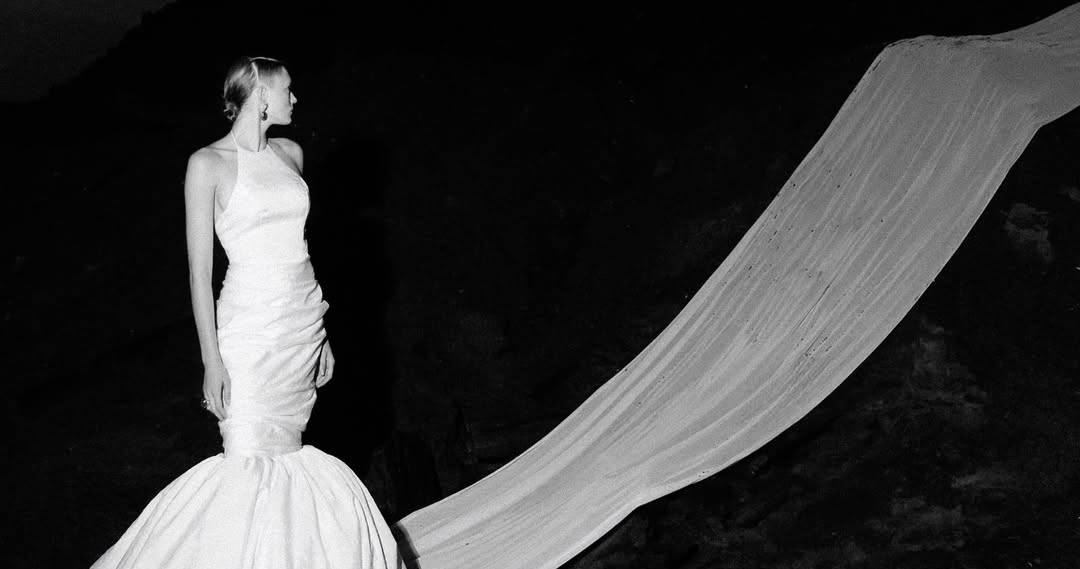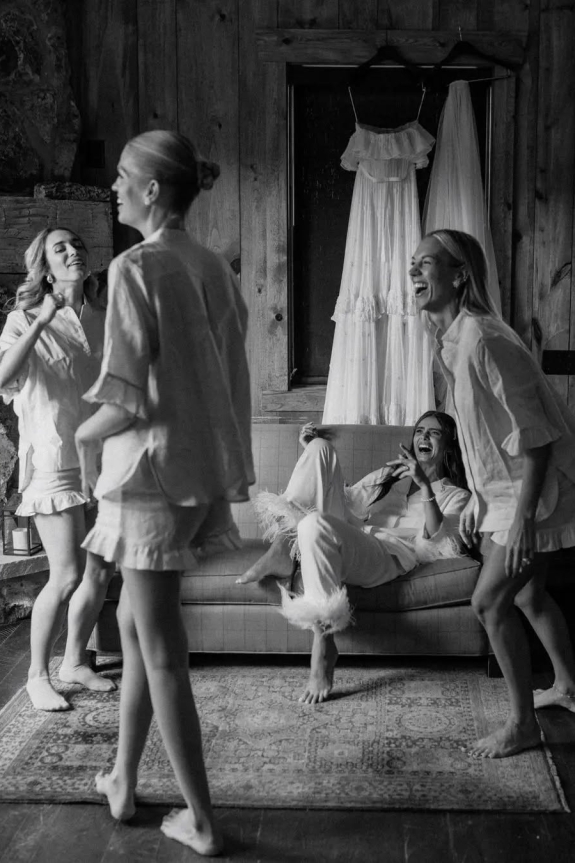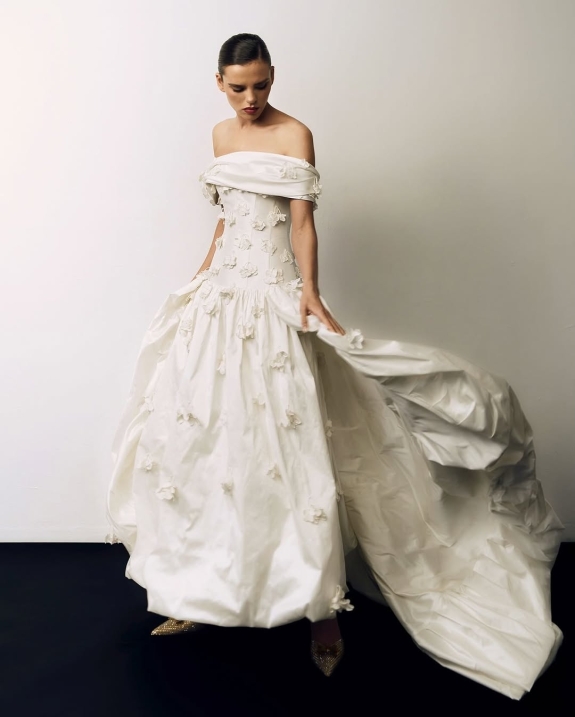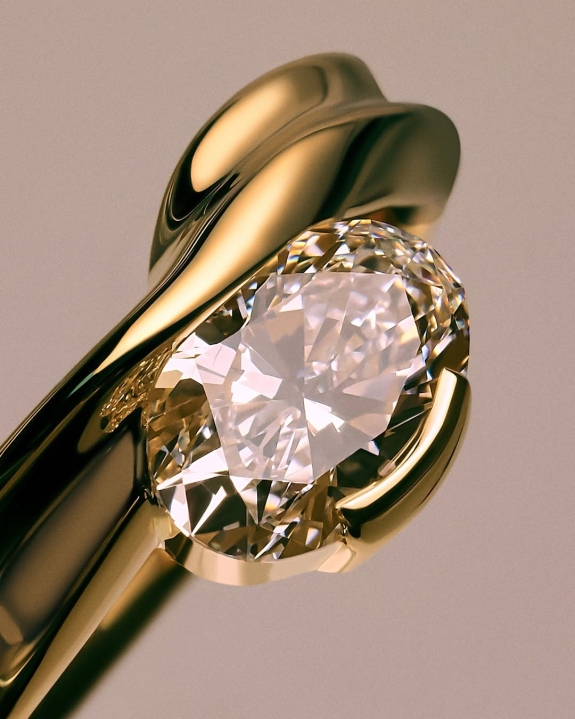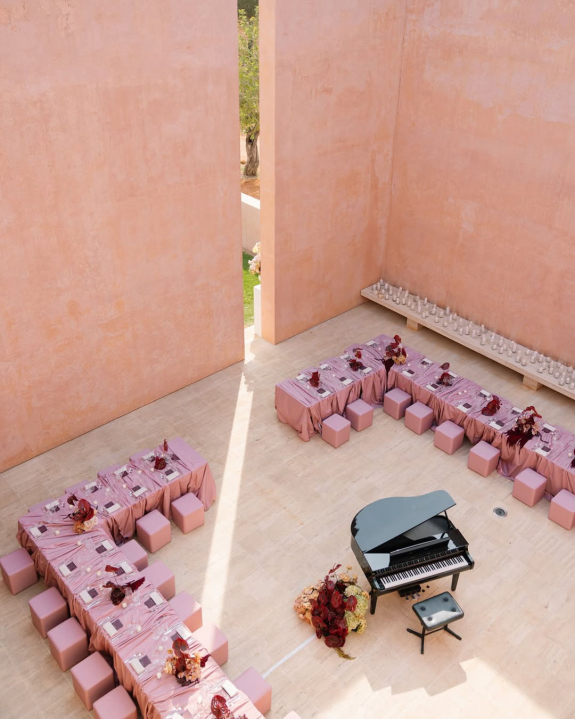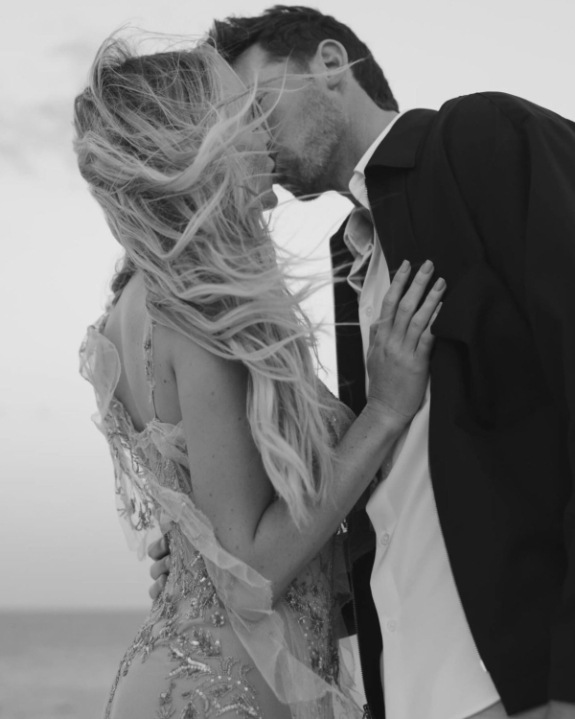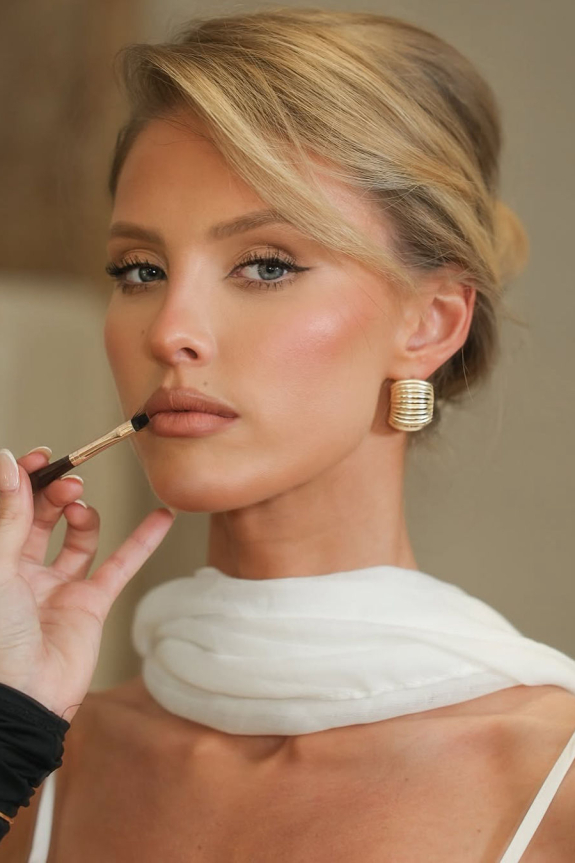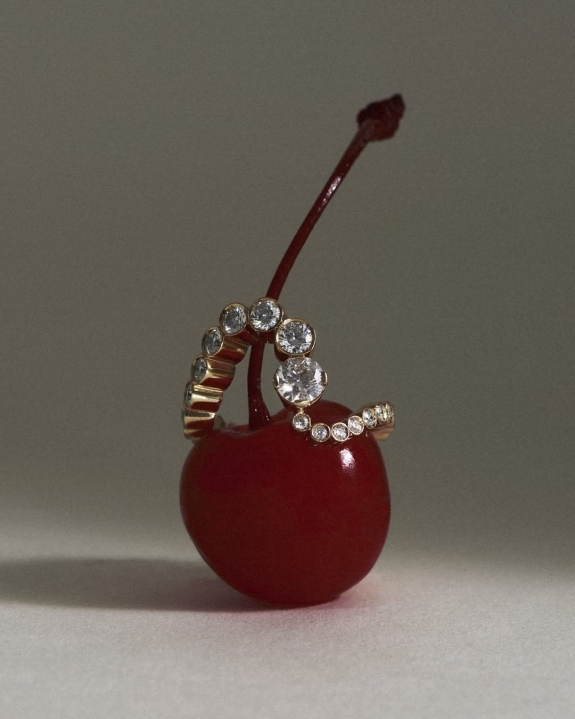THE WED Pinterest, White House Flowers
If you’re at the start of your wedding planning era, or even just daydreaming about it, chances are you already have a digital shrine to your dream day. Maybe it’s a Pinterest board brimming with statement florals and candlelit tablescapes, or a camera roll crammed with screenshots of gowns, color palettes, and that one perfect bouquet. Mood boards have become the modern couple’s creative compass, helping turn elusive ideas into tangible visions. But can too much inspiration quietly steer you and your vendor team off course? We asked industry experts to unpack the art (and occasional trap) of wedding mood boards—plus how to craft one that works for you, not against you.
Inspiration or Limitation?
Mood boards have become the modern couple’s go-to for distilling a thousand Pinterest saves into one cohesive vision. But while these collages promise clarity, do they truly ignite your vendors’ creativity or do they quietly box them in? For Katerina Vinogradova, the creative force behind wedding website and stationery studio Avelã White, a good mood board is less of a cage and more of a launchpad. “A well-curated mood board helps us understand the direction of the couple’s vision and whether we’re the right fit stylistically. Even if the references aren’t design-specific, having a sense of the overall concept, tone, and atmosphere they want to create is incredibly helpful.”
Echoing that perspective, Lauren Oliver of Style Atelier—a wedding and event planning studio—says she loves when couples bring visual cues to the table. “We always invite our couples into the styling process with open hearts and open minds. Mood boards can be helpful in those early conversations as they offer a glimpse into your initial vision and the aesthetic you're instinctively drawn to.”
Gigi & Roses / Fotis Sid Photography, Avelã White
A Creative Launchpad
Photographers Paco & Aga are equally enthusiastic about using imagery as inspiration. “We definitely prefer mood boards over long lists of must-have shots—those can be limiting and take us out of the flow. A mood board, on the other hand, gives us direction while still leaving space for creativity and spontaneity.”
Florist and stylist Jessica Droste of Boujeehaus takes a more nuanced approach. “As a designer, you absolutely rely on some visual or verbal cues from the client to understand their vision and desired aesthetic. While we provide a guided intake questionnaire with descriptive prompts and 'buzz words' to help clients articulate the mood or vibe they want to create, imagery can often communicate far more than words - so reference images are always welcome,” she explains. “That said, I prefer when clients share a few inspirational images or attach visual references to our questionnaire, rather than presenting a fully curated mood board. In our experience, this can sometimes raise red flags.”
Paco & Aga, Style Atelier / Josie Lee
Clear Vision vs. Blank Canvas
Somewhere between a hyper-detailed mood board and a completely open brief lies the sweet spot vendors dream about — a vision clear enough to guide, but loose enough to inspire. “Sometimes clients come to me with so many inspiration photos that it can be hard to pinpoint a clear vision,” says Meag Bakhtiari of Meag Breanne Events, a seasoned wedding and event planner. “Ideally, I love when they share a few colors they are drawn to and a couple of key descriptors. That gives me just enough direction while still allowing the creative freedom to design something unique and intentional.”
Stationery designer Signed by Yiana thrives in either scenario. “When a client comes to me with a clear mood board, it helps me understand what they’re envisioning and sets clear expectations for both sides. It streamlines the design process and ensures I can tailor my work to fit seamlessly within their overall theme. On the other hand, starting with a clean slate allows for full creative freedom. It’s an exciting opportunity to explore new styles, trends, and materials, and to bring something completely fresh to life.”
Meag Breanne Events
Photography: Kadi Tobin, Jessica Rieke
Managing the Budget
A mood board might be aesthetically gorgeous, but if it’s laced with sky-high budget references, your vendors may already be mentally calculating how to keep your dream from breaking the bank. Wedding planner Gigi of Gigi & Roses has mastered this balancing act. “It all starts with a planner’s production experience. When we deeply understand the costs involved, we are better at explaining them and even better at finding smart alternatives or replacements,” she says. “When a couple also understands the labor and cost behind a concept, it becomes much easier for them to compromise without losing the heart of their original idea. For me, it’s essential to preserve the core vision and work around it in the most cost-effective way so they can both love it and afford it.”
Gigi & Roses / Fotis Sid Photography, Avelã White
Expectations vs. Reality
Boujeehaus's Jessica Droste also knows what it’s like when inspiration images overshoot reality. “In many cases, clients are simply trying to convey the overall look, mood, or floral 'vibe' they’re drawn to. Where it becomes trickier is when clients present specific reference images as something they expect to replicate exactly—often without realizing those designs were created with budgets well beyond their own," she shares. “In those situations, the best approach is a transparent, empathetic conversation about what’s achievable within their actual budget. While we may not be able to recreate the scale or level of detail in those images, we can absolutely offer refined, scaled-back solutions that still capture the essence of the look they love.” For Meag Breanne Events, budget is always the first puzzle piece. “It’s the foundation for everything. Once the budget and priorities are defined, we can go through the inspiration photos together and talk through what’s realistic.”
Boujeehaus / Little Black Bow Photography, Paco & Aga
Common Mood Board Mistakes
Compiling a collage of your dream-day saves might sound simple, but there’s more to it than dragging pretty pictures into a folder. “One of the most common mistakes is mixing too many conflicting aesthetics or trying to decide everything at once,” notes Avelã White. “It’s completely normal not to have every detail figured out from the start, and trying to combine every inspiration can create confusion. It’s much more helpful to start with a clear direction or feeling, and then refine the details as other elements (like the venue or outfits) are confirmed.”
From behind the camera, Paco & Aga see another recurring issue. “Sometimes clients focus on what’s in the photo—a beautiful dress, stunning flowers, an epic view—rather than the photography itself. But it’s things like lighting, composition, moment, angle, and editing style that really define the image. So it can be hard to tell what exactly they like photography-wise.”
To sidestep confusion and keep things streamlined, Style Atelier recommends creating separate boards for different parts of the day. “Ceremony, reception, florals, stationery, fashion, etc. Anything that speaks to your vision. It helps us read between the lines and get a clear sense of what’s really resonating with you.”
Ann Bakhtina, Style Atelier / Jag Creative Studio
The Anatomy of a Perfect
Mood Board
So what’s the secret to a mood board that truly works? According to Style Atelier, the strongest mood boards think beyond the aisle. “We want to understand you. The places that light you up, details from your favorite restaurant, the colors and textures that feel like home. Art, architecture, interiors – anything that gives us a window into your world.“
For Signed by Yiana, it’s less about visual perfection and more about emotional resonance. “For me, a great mood board tells a visual story. It’s not about the quantity of images or how polished it looks, but about the meaning, intention, and overall ambiance it embodies. It should reflect the feeling you want to evoke on your special day.”
Consistency is another cornerstone, especially when building your photography mood board. “A great mood board shows consistency in tone, lighting, and emotion. It doesn’t need to be perfectly curated, but it should highlight the overall feeling the couple wants to capture,” explains Paco & Aga.
Signed by Yiana / Mathilde B, Paco & Aga
Use Your Mood Board Wisely
When it comes to actually using mood boards, seasoned vendors agree: it’s all about balance, openness, and trusting the creative process. “Think of your mood board as a conversation starter, not a fixed blueprint. The real magic comes in trusting your designer to interpret your inspiration into something elevated, personal, and uniquely yours,” says Avelã White.
Gigi & Roses encourages couples to dig deeper for inspiration. “I know Pinterest and Instagram are an endless source of inspiration for couples, but most of it comes from other people’s weddings. What I would really love is for couples to share more unexpected references: a color they love, a flower from their childhood, a texture, or even a photo that evokes a feeling. That’s where truly unique concepts are born.” And as Boujeehaus reminds couples, there’s no need to over-curate. “There’s no need to create a polished or fully curated mood board when you’re working with a stylist and florist—that’s our job! If the visual impact of your day is important to you and you want it to feel unforgettable in all the right ways, the key is choosing a vendor whose creative style naturally resonates with your own.”
